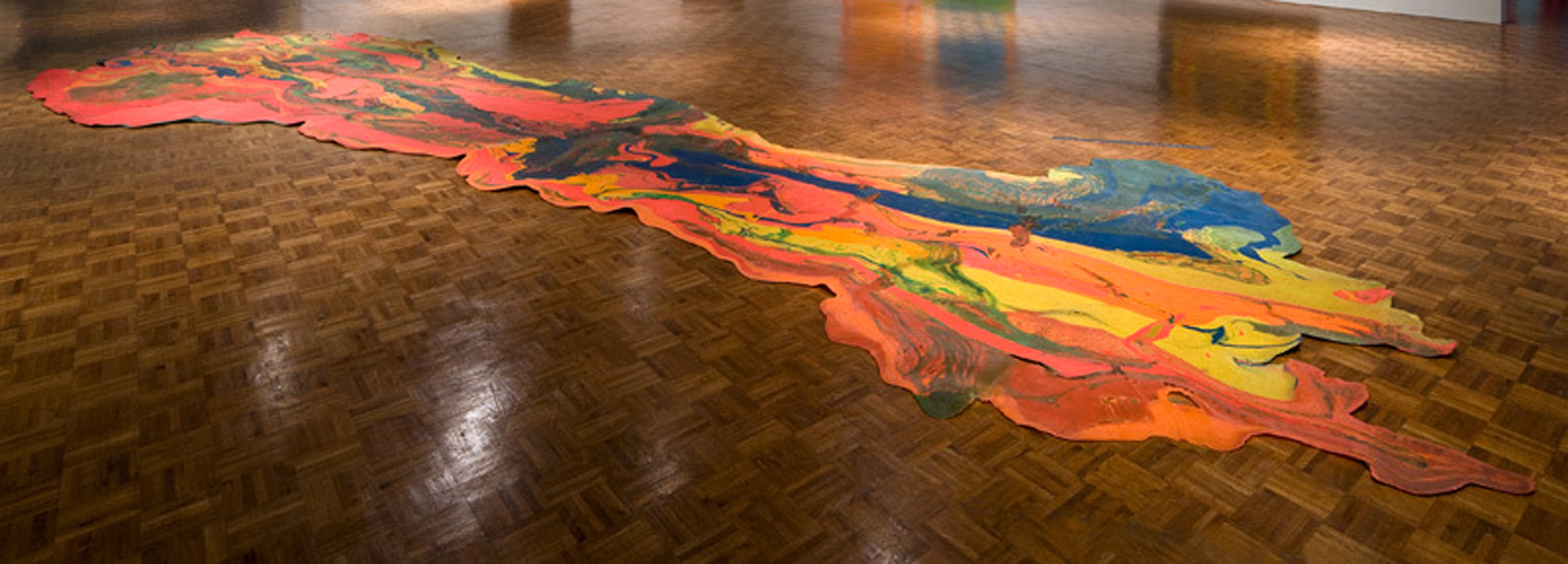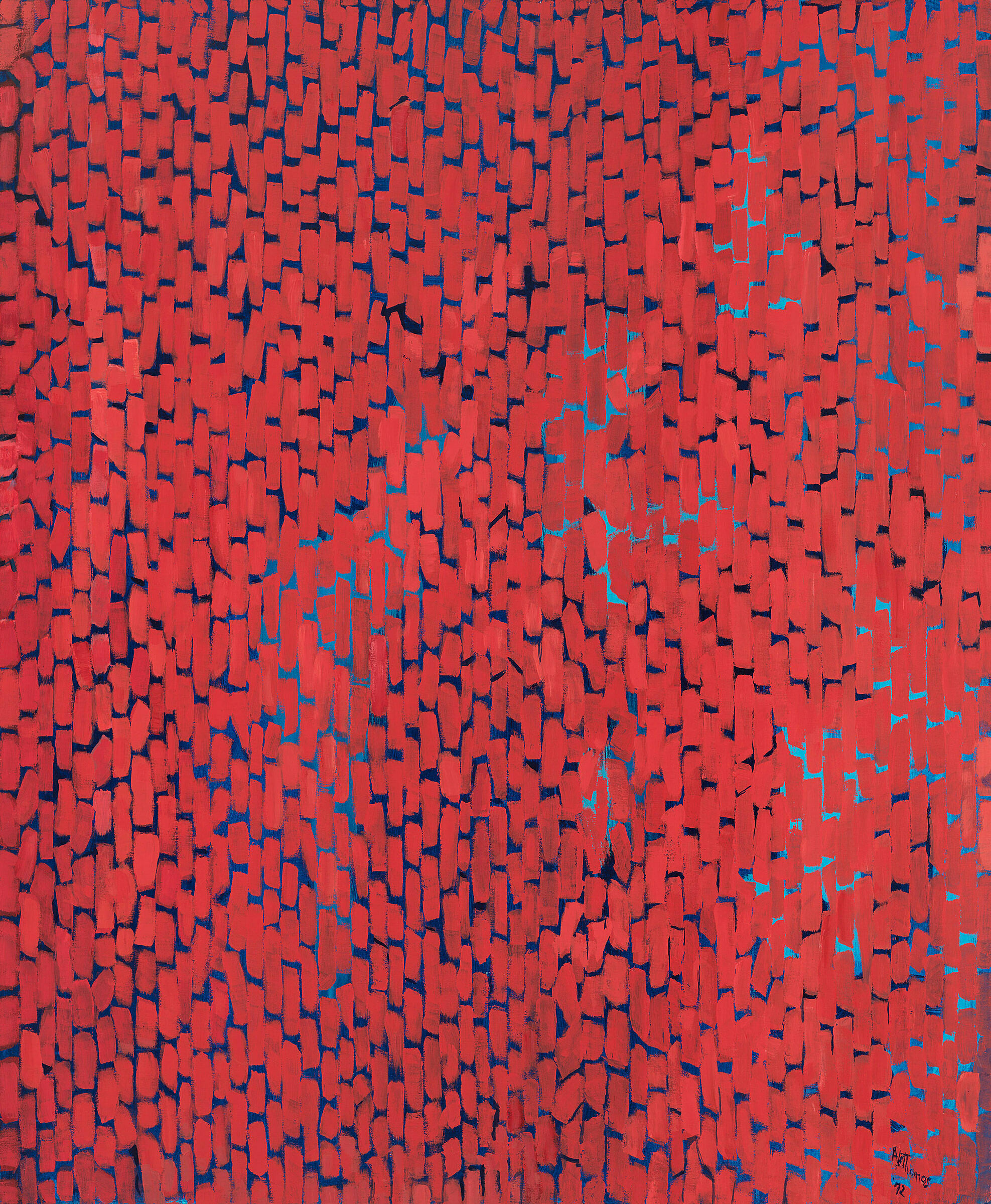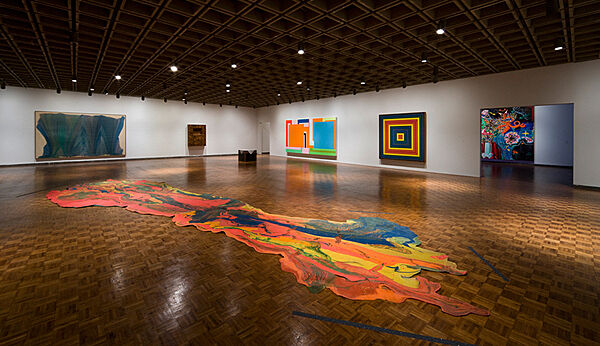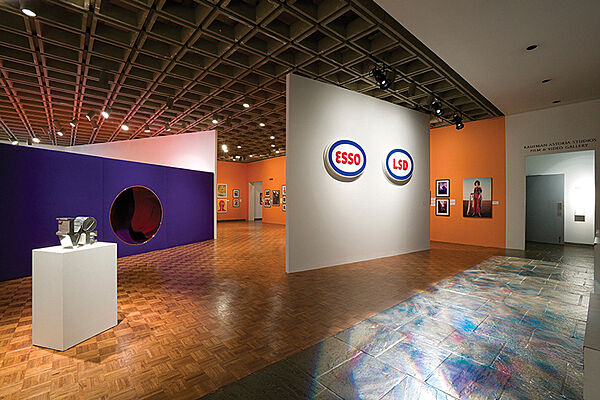In 1969, Lynda Benglis began to experiment with pouring liquid rubber latex to make large-scale works such as Contraband. In this and other related works, Benglis mixed bright, DayGlo pigments into cans of the latex and then poured the material onto waxed linoleum or directly onto the floor, allowing the substance to be itself, subject to physical laws and gravity. The scale of Contraband was determined by the location in which it was made and its contours are defined by the natural flow of the latex on the surface where it was formed. With no support apart from its organic “skin” of pigment, it represents Benglis’s inventive fusion of painting and sculpture. Using a material that is not itself paint, the artist nonetheless draws attention to paint's essential, primary properties: color and liquidity. Benglis named this work Contraband after a bayou near her childhood home in Louisiana. She has said that the artwork reminded her of toxic oil slicks on the water.
Not on view
Date
1969
Classification
Sculpture
Medium
Pigmented latex
Dimensions
Overall (irregular): 3 × 116 1/4 × 398 1/4in. (7.6 × 295.3 × 1011.6 cm) Overall (thickness of latex): 1/8in. (0.3 cm)
Accession number
2008.14
Credit line
Whitney Museum of American Art, New York; purchase, with funds from the Painting and Sculpture Committee and partial gift of John Cheim and Howard Read
Rights and reproductions
© Lynda Benglis / Licensed by VAGA at Artists Rights Society (ARS), New York




